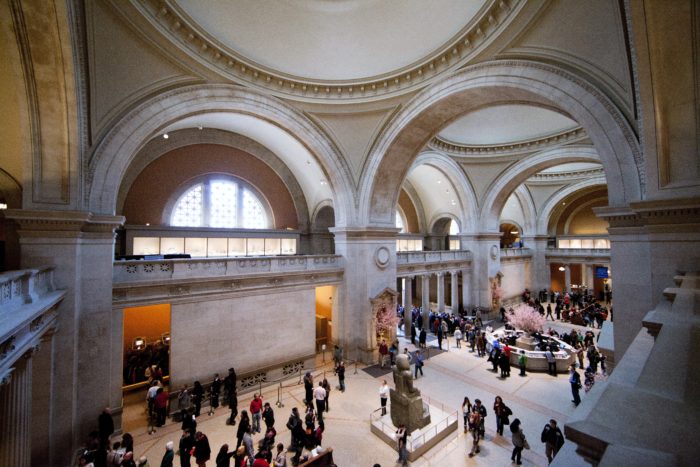The Metropolitan Museum of Art, New York, Photo Courtesy : Commons Wikimedia
Despite facing financial crisis, New York’s iconic museum hosts some of the most cutting-edge exhibitions in the world. A financial restructuring is on anvil.
What is it about antiques and art that fascinate the affluent and discerning across the world? This love for the past, often seen through the prism of the artifacts left behind by our ancestors, finds sustenance in museums.
Across the world, museums are the crucibles of art, mythology and culture, preserving the best of human, and even animal, heritage. Yet, many face significant financial crunch.
The most recent news is of New York’s iconic Metropolitan Museum of Art, which hosts the annual glamorous ball, the Met Ball, acknowledging that it is facing a deficit of $10 million year, which, many officials admit, would balloon to as much as $40 million if the Met does not change course and scale back.
The museum says that it has probably overreached: it opened its Met Breur space, which hosts contemporary, cutting-edge art exhibition in Whitney’s former building on Madison Avenue. It will reportedly cost $17 million each year to run. The museum also has chosen architect David Chipperfield to design its new $600 million wing for modern and contemporary art. And it reached a settlement in part of a long-running legal challenge to its admissions policy, agreeing to call its $25 full-admission charge. The Met also spent about $3 million on a re-branding effort.
To cope up with the financial loss, the museum recently announced a 24-month financial restructuring project, which includes reduction in their staff, slower construction of its new wing and maybe, reduced programming. The Met will seek to build revenue by drawing new visitors, including groups and increasing restaurant proceeds.
This isn’t the first time that the museum has taken up a restructuring plan: in 2009, it had retrenched some staff and curtailed programming to come out of red. According to Daniel H. Weiss, the Met’s president, about 70 per cent of its funds are spent on salaries. The earnings, on the other hand, have fallen: retail revenue has declined by $3 million over the last year, but salaries have increased.
Despite the tough financial straits, Met continues to host some of the most avant-garde and cutting-edge exhibitions. Their most recent exhibition, which shuts on June 5, is on Indian antiques and mythology. ‘Encountering Vishu: The Lion Avatar in Indian Temple Drama’ has several rare sculptures and paintings on exhibit. Five rare wooden sculptural masks made in India, which were recently acquired by Met, are the highlight of the special exhibition. These were donned by actors in plays presented during religious festivals in southern India and represent a largely unrecorded category of late medieval devotional art from India. John Guy, curator of South Asian Art at MET, says that the masks were purchased from an old English dealer who acquired them in southern India in the ’80s as part of his interior design business. “I have always been fascinated by the early avatars of Vishnu, especially Varaha and Narasimha. The acquisition of this set of masks allowed me to build this exhibition around the dramatic narrative of Narasimha’s battle with the evil,” says Guy.

Hiranyakasipu, ca. 1700–1750, South India (Tamil Nadu) Photo Courtesy: The Metropolitan Museum of Art, New York
The appearances of Vishnu in many guises, known as avatars, are most famously celebrated in his Ten Avatars (Dasavatar). In this exhibition, Vishnu’s Narasimha (man-lion) appearance is celebrated with several dramatic sculptural depictions. They all explore the theme of Vishnu in his man-lion form, revealing himself at the court of an evil king in response to the king’s attempts to slay his own son for his unwavering devotion (bhakti) to Vishnu. This narrative is dramatically represented in sculptures and painting, and when staged it is given heightened drama by the wearing of these powerfully expressive masks. This temple drama, known as Hiranyanatakam, is still performed in the Kaveri delta region of Tamil Nadu, in villages around Thanjavur in southern India.
Along with the masks, the exhibition presents works in bronze, sandstone and wood, as well as miniature paintings, lithographic devotional prints, and early photography, all of which illuminate the theme of Vishnu’s divine appearances. Dating from the 6th to the 20th century, the 30 works are drawn from the Met’s collection, as well as private collections, and include an extraordinary seated sandstone Narasimha from the sixth or seventh century.
For Met, supporting leading-edge art is part of their DNA and that won’t change, despite the downturn.



